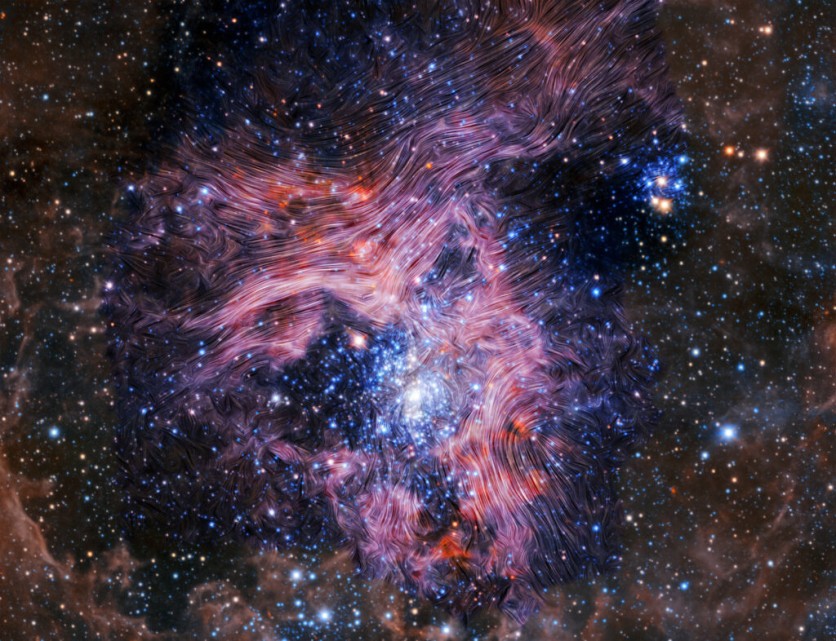NASA's Stratospheric Observatory for Infrared Astronomy (SOFIA) has recently made a discovery within the captivating expanse of the Tarantula Nebula.
SOFIA has captured a magnetic maelstrom within the heart of this celestial marvel known as 30 Doradus through its state-of-the-art technology and scientific prowess.

Secrets of 30 Doradus
Located in the Large Magellanic Cloud, 30 Doradus pulsates with astonishing energy. Its primary power source stems from the massive star cluster R136, which generates multiple colossal shells of matter expanding outward.
However, an enigmatic phenomenon occurs in the region near the nebula's core. The gas pressure here appears surprisingly lower than anticipated, given the intense stellar radiation emanating from R136.
Additionally, the area's mass is smaller than expected, raising questions about the system's stability.
To unravel the secrets of 30 Doradus, astronomers turned to SOFIA's remarkable High-resolution Airborne Wideband Camera Plus (HAWC+). This cutting-edge instrument enabled them to delve into the intricate interplay between magnetic fields and gravity within the nebula.
The magnetic fields within 30 Doradus exhibit a fascinating, duality-simultaneously complex and organized. Vast variations in their geometry are intricately linked to the large-scale expanding structures that permeate the nebula.
These magnetic fields serve as the unsung heroes, upholding the equilibrium and integrity of this celestial tapestry.
Magnetic Fields
In most areas of the nebula, the magnetic fields exhibit tremendous strength. This strength allows them to withstand the turbulence that threatens to disrupt the gas motion within 30 Doradus.
They act as custodians of the nebula, ensuring its structural stability and preventing gravity from seizing control and collapsing the cloud into a dense cluster of stars.
However, amidst the strength, there are pockets of relative weakness in the magnetic fields. These regions enable gas to escape, leading to the inflation of colossal shells that embellish the cosmic landscape.
Surprisingly, within these shells, stars continue to form, defying the overwhelming influence of the mighty magnetic fields.
The implications of this discovery are profound. By comprehending the role of magnetic fields in the evolution of 30 Doradus, astronomers can gain deeper insights into the mechanisms driving the dynamics of nebulae.
SOFIA, a collaborative effort between NASA and the German Space Agency at DLR, has been instrumental in unlocking the secrets of 30 Doradus.
In collaboration with the Universities Space Research Association, the German SOFIA Institute at the University of Stuttgart and NASA's Ames Research Center have played integral roles in overseeing the SOFIA program, managing scientific operations, and ensuring the mission's success.
Since attaining full operational capability in 2014, SOFIA has soared to incredible heights, pushing the boundaries of astronomical research. While the mission concluded its final science flight on September 29, 2022, the legacy of SOFIA's discoveries provides valuable insights into the vast mysteries of the universe.
Related Article : NASA's Hubble Space Telescope Captures 'Butterfly Nebula' In Stunning Motion | Fun Facts About This Beautiful Space Butterfly





